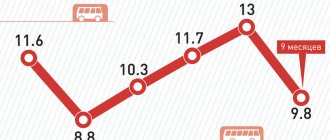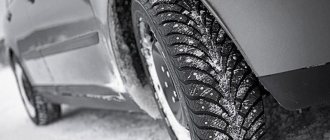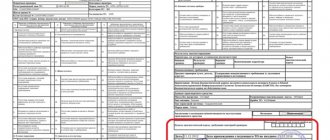Propane is most often called a mixture consisting of butane and propane. Impurities of other gases may be present, but they are insignificant. The peculiarity of propane is that it has neither odor nor color. This is quite dangerous, because it is difficult to establish and prevent the fact of a leak, which can lead to serious consequences. Therefore, an odorant substance, which has a pungent odor, is often added to the mixture. Propane is obtained during oil refining or during the extraction of petroleum gases. Propane is widely used in metallurgy and is also used as fuel. The mixture is transported in steel cylinders providing a pressure of 16 atmospheres.
- 2 Rules for safe handling of propane cylinders during transportation
- 3 Video: consequences of poorly secured gas cylinders
- 4 Video: how to safely disassemble a gas cylinder
- 5 How many cylinders can be transported?
- 6 Necessary documentation for transporting propane
General rules for transporting propane in cylinders
In order to avoid errors during transportation, the following conditions must be met:
- a vehicle transporting propane must be tested for the ability to transport dangerous goods, the vehicle must also be equipped with fire safety equipment and have signs on its sides warning about the transportation of explosive goods;
- care must be taken to draw up appropriate documentation permitting the transportation of propane in cylinders so that government authorities have the opportunity to verify compliance with the rules for the transportation of dangerous goods;
- Explosion warning stickers must be placed on the cylinders;
- the driver must be instructed in safety rules and be certified to transport propane cylinders.
Vehicle for transporting propane in cylinders
Propane cylinders intended for transportation should be stored in specially prepared places away from heaters, electrical wires and fire. When loading cylinders into a car in an open space, heating by the sun's rays should be avoided, so gas containers should be placed in the shade. Failure to comply with this rule can lead to tragedy. The minimum distance that can be between containers with propane and lubricants, oil and paint is 6 meters.
To avoid the possibility of falling, gas cylinders in the vehicle must be positioned horizontally. But in the case of propane, transportation in a vertical position without a container is allowed if gaskets are used between the cylinders and a special fence that protects against falling. Empty cylinders cannot be transported together with full ones.
Transportation rules
The traffic rules strictly stipulate the rules for transporting gas cylinders by road. Basic moments:
- Transportation of gas cylinders must be carried out in serviceable containers; in addition, the structural parts of these containers must be in good condition.
- The gas equipment must contain the necessary inscriptions, including the name of the transported cargo, as well as danger signs.
- The container must be filled with gas according to the standards, and this indicator cannot be exceeded.
- The rules for transporting gas cylinders in a passenger car assume that the devices are mounted in the trunk. For fastening, devices are used that will protect well from impacts and movement. Rope fastenings, rubber rings, and so on are suitable.
- The cylinder is strictly prohibited in the vehicle interior.
- After filling the cylinder, you should make sure that it is tightly closed;
- Such containers can only be transported horizontally; valves must be turned into the vehicle interior. It is prohibited to place more than 3 cylinders in a row.
- Transportation of gas cylinders by road is carried out taking into account the load-carrying characteristics of the vehicle and the road surface.
- In summer, you need to be especially careful when transporting gas cylinders. They should not be exposed to high temperatures.
Transportation of propane by road in cylinders, like other types of gas, must be carried out in accordance with safety standards. Thus, devices are prohibited from being transported together with substances that are flammable and explosive.
When transporting gases, the vehicle must always be supervised. Do not smoke near the car or stop near an open fire. The driver must remember that he needs to drive at a low speed, and sudden braking is prohibited.
Loading and unloading of gas cylinders must be done very carefully so that there are no impacts.
Car owners often wonder whether it is possible to transport a gas cylinder in the trunk of a car. The answer is yes, but you just need to remember the requirements described above and comply with them.
Rules for safe handling of propane cylinders during transportation
Loading propane cylinders
Persons involved in loading may only handle cylinders with clean hands. To avoid the cylinder slipping, it is recommended to use clean gloves or a rag. This will prevent sand or grease from contaminating the valve nozzle. It is better to move cylinders from the warehouse to the car using carts designed for this purpose. Propane cylinders must not be dragged. When loading gas containers using lifting mechanisms, care should be taken to securely secure the cylinders to avoid falling.
In the case of propane transportation, negligence is punished especially severely! Here we are not talking about fines or banal loss of cargo, which entailed only financial losses. The consequences of ignoring safety rules can lead to a real emergency.
Is there a fine for violating transportation rules?
Violators of the requirements for the transportation of dangerous goods are punished in accordance with Article 12.21.2 of the Code of Administrative Offenses of the Russian Federation. The measure of liability directly depends on the type of offense and the status of the offender (driver, official or legal entity). Provided punishment options:
- For violation of safety precautions for transporting cylinders intended for personal use (a monetary fine is imposed only on the driver). Its size is 1500 rubles.
- If there are violations in the activities of a driver who has an ADR certificate, a fine of 2,500 rubles or deprivation of the right to drive a vehicle for up to six months.
- For an official, a similar offense faces a fine of 20,000 rubles, for a legal entity - up to 500,000 rubles. In both cases, the vehicle will be detained until the identified violations are completely eliminated and safe transportation conditions are restored.
- For other violations when transporting gas for commercial purposes, the driver will have to pay 1,500 rubles, an official - up to 10,000 rubles, and a legal entity - up to 200,000 rubles.
| Did not find an answer to your question? Call a lawyer! Moscow: +7 (499) 110-89-42 St. Petersburg: +7 (812) 385-56-34 Russia: +7 (499) 755-96-84 |
Transportation of gas cylinders can be carried out for both personal and commercial purposes. In the first case, subject to the limit on the number of cylinders, the driver can carry out such activities without obtaining permission. Gas transportation for commercial purposes is only possible with an ADR certificate.
Video: consequences of poorly secured gas cylinders
When loading and unloading propane cylinders, the following rules should be followed:
- It is forbidden to work alone, at least 2 people can participate;
- You cannot carry cylinders on your arms or on your shoulder;
- cylinders should be loaded and unloaded in such a way that they do not hit each other or hit the ground;
- It is prohibited to hold and feed cylinders with the valve down;
- cylinders must have caps and plugs;
- it is necessary to protect the cylinders from rust and oxidation;
- during transportation, the cylinders must be secured to a rigid base;
- tightening the protective caps should be done by hand to avoid sparks;
- the temperature of the propane cylinder during transportation should not exceed 45 degrees Celsius;
- transporting propane and oxygen in the same car is strictly prohibited;
In order to disassemble a gas cylinder, you must also follow safety precautions. First, you need to make sure that the cylinder is empty. Then remove the protective caps and valve to fill the cylinder with approximately 30 liters of warm water. Only after this can the cylinder be cut to use it for your own purposes. Inventive citizens use a disassembled cylinder, for example, as a barbecue. Sometimes homemade heaters are made from it.
Is transportation of cylinders allowed?
The international agreement notes that transportation of gas cylinders in a passenger car is possible only for personal use. For example, for delivery to a suburban area. Precautions should be taken to avoid leakage. The same document determines how many propane cylinders can be transported without a permit. The volume loaded into the trunk is limited to 333 liters. The driver will not be fined for carrying such dangerous luggage.
Attention! When transporting gas cargo commercially, the company must obtain the appropriate license. Each driver must receive instructions on how to drive special vehicles.
How many cylinders can be transported?
At the legislative level, the transportation of 15 propane cylinders in one vehicle does not apply to the transportation of dangerous goods. Propane has the smallest amount among other gases. The table shows comparative indicators of the maximum number of cylinders of different gases, at which the standards for the transportation of dangerous goods do not apply:
| Gas name | Group | Tara | Quantity |
| Argon | 2A | 40 liter cylinder | 24 pieces are allowed to be transported |
| Helium | 2A | 40 liter cylinder | 24 pieces are allowed to be transported |
| Carbon dioxide | 2A | cylinder weighing 24 kilograms and volume 40 liters | 41 pieces are allowed to be transported |
| Carbon dioxide | 2A | cylinder weighing 19 kilograms and volume 40 liters | 52 pieces are allowed to be transported |
| Nitrogen | 2A | 40 liter cylinder | up to 24 pieces inclusive |
| Oxygen | 2O | 40 liter cylinder | 24 pieces are allowed to be transported |
| Acetylene | 2F | A cylinder weighing 5 kilograms and volume 40 liters | 18 pieces are allowed to be transported |
| Propane | 2F | A cylinder weighing 21 kilograms and volume 50 liters | 15 pieces are allowed to be transported |
Class “A” includes neutral gases, “O” – oxidizing, “F” – flammable.
Basic facts about gas equipment in cars
Any liquefied fuel (propane or oxygen) is classified as unsafe cargo. This is explained by the fact that containers are filled with it under pressure, and the gas is highly flammable and explosive. Regulation of risky transportation is carried out on the basis of legal documents:
- Decree of the Government of the Russian Federation No. 272 of April 15, 2011.
- European Agreement concerning the Regulation of the International Carriage of Dangerous Goods by Road. It has been operating on the territory of the Russian Federation since 1994.
- Explanations of the Ministry of Internal Affairs of Russia No. 13/2-121 dated July 26, 2006.
These acts explain under what conditions and in what size gas cylinders are transported. Approved standards:
- Delivery of compressed argon and oxygen is limited to 20 liters;
- Propane substance or dissolved acetylene cylinders move less than six standard containers.
50 liters of fuel are launched into one vessel. Only 6 pieces can be placed in the luggage compartment of a passenger vehicle.
Rules for delivery by road transport
To increase transportation safety, it is not allowed to transport containers with oxygen and containers with any flammable gases (including empty ones) together on any type of road transport. The only exception is the movement of incompatible tanks on special carts to work stations.
Substances incompatible with oxygen that can cause an explosion at a certain concentration include flammable propane gas.
Non-flammable nitrogen (N2) is considered safe when transported with oxygen cylinders. Helium and argon can be transported together with bottled oxygen.
Is transportation of gas cylinders allowed?
Transportation rules
Today, the traffic rules (clause 6.2) specify clear rules for the transportation of gas cylinders by road. This document defines the following provisions:
- Gas cylinders can only be transported if the containers, their plugs and fittings are in good condition.
- LPG equipment must have appropriate labels, including danger signs and the name of the cargo being transported.
- Do not exceed the established norm for filling the container with gas.
- The rules for transporting gas cylinders in a passenger car mean that the cylinders must be secured in the trunk using special devices that protect them from movement and shock. These can be bars with sockets made of wood, rubber rings or rope fastenings.
- It is prohibited to transport a gas cylinder inside a car.
- After each refueling, the gas container must be checked for leaks.
- Such cargo can only be transported in a horizontal position, with the valves facing the vehicle interior. You cannot install more than three gas cylinders in a row.
- Transportation of gas cylinders by road must be carried out taking into account the quality of the road surface and the lifting characteristics of vehicles.
- Gas cylinders should be transported with extreme caution in the summer. The cargo must be protected from high temperatures.
Transportation of propane by road in cylinders, like other types of gas, requires compliance with safety rules. Thus, gas cylinders cannot be transported together with explosive or flammable substances.
When transporting gases, the vehicle must not be left unattended. It is strictly forbidden to smoke near the car or stop near an open fire. It is worth giving up high speed driving and sharp braking.
The process of loading and unloading gas cylinders should be carried out with extreme caution, avoiding sudden impacts.
Many car enthusiasts have a question about whether it is possible to transport a gas cylinder in the trunk of a car. This is not prohibited if all the above requirements are met.
The need to transport gas cylinders in their own car often arises among many motorists. Some want to take the gas cylinder to their dacha, while others want to take it to the place where, for example, they are building a house. In this situation, every driver has a question: is it possible to transport gas cylinders in a passenger car? Many fear that they will be fined for this, because this cargo is very dangerous. In order to understand this problem, one should turn to the Russian regulatory framework.
Is it possible to transport gas cylinders?
Gas fuel is pumped under very high pressure and for this reason its transportation is always dangerous. Drivers are often stopped for inspection by traffic police and, upon seeing such a load in the car, are fined.
Transportation of gas cylinders is permitted in the following volumes:
propane – 1-6 cylinders;
argon – maximum 20.
If the cylinder is 1 and its capacity is not more than 50 liters, then it is allowed to be transported in one car, since this volume is not considered dangerous cargo.
But the capacity of gas cylinders varies. In this case, the motorist must try to determine the permissible quantity for transportation by multiplying the number of non-prohibited gas cylinders by 50 and dividing the result by the volume.
But we must remember that not all types of gases can be transported in one vehicle due to their increased explosive hazard upon contact. Some gases can only be transported in certain proportions.
Be that as it may, such cargo must always be securely secured during transportation.
Failure to comply with safety regulations may result in a fine for the motorist, and the integrity of the container may be compromised.
Transportation principle
Today, clause 6.2 of the traffic rules defines clear standards for the transportation of cylinders with gas fuel. This document reflects the following provisions:
Gas fuel must be transported only in serviceable containers.
The LPG itself must have appropriate markings indicating the danger and the name of the cargo being transported.
It is prohibited to exceed a certain norm for filling containers with gas fuel.
The standards for transporting gas cylinders in a passenger car require that the container must be secured in the trunk with special devices that would not allow the cylinders to move and come into contact with each other. Such devices can be wooden blocks with grooves, rubber rings or cable fastenings.
The cylinder cannot be transported inside a car.
The container, after filling it with gas, should be checked for leaks.
Such cargo should only be transported lying down, and its valves should be turned towards the vehicle interior. Do not install more than 3 gas cylinders in one row.
When transporting such dangerous cargo by road, the quality of the road and the carrying capacity of the vehicle itself must be taken into account.
In summer, gas containers should be transported very carefully and should be protected from extreme heat.
Transportation of propane in cylinders by road transport requires compliance with safety regulations. Gas cylinders must not be transported simultaneously with flammable compounds.
A vehicle carrying gas should not be left unattended. It is strictly forbidden to smoke near the car or leave the car near an open fire. When transporting gas, there is no need to drive or brake sharply.
Loading/unloading of gas cylinders should be done carefully.
In short, if the above requirements are not met, then transportation of gas in a car is prohibited.
Fine for violation of transportation rules
A traffic police officer cannot punish a driver if the latter is transporting gas in the permitted quantity, because such a volume is not dangerous. However, he has the right to fine a motorist for transporting gas cylinders without observing the necessary safety rules. If it turns out that gas cylinders are poorly secured or not secured at all, or that they do not have the appropriate markings, such a driver will be punished with a fine of 2,500 rubles. For a more serious violation, the motorist may be deprived of his license for 4-6 months.
How many cylinders can you carry?
In general, transportation of 15 cylinders in one vehicle is not considered transportation of dangerous goods.
. And often you can carry significantly more without any problems! Below we provide a detailed rationale for this fact and provide a table of the maximum number of cylinders with the most common gases.
Regardless of what traffic police officers think about this, there is a LAW, and court decisions [, ] confirm this.
The transportation of dangerous goods in the Russian Federation is regulated by the following documents:
Thus, the question of the maximum quantity of substances that can be transported as non-dangerous goods comes down to the study of section 1.1.3 of ADR, which establishes exceptions from the European rules for the transport of dangerous goods associated with various circumstances.
So, for example, in accordance with paragraph 1.1.3.1 “The provisions of ADR do not apply ... to the transport of dangerous goods by private persons, when these goods are packaged for retail sale and are intended for their personal consumption, household use, leisure or sports, provided that that measures have been taken to prevent any leakage of the contents under normal conditions of carriage."
However, a group of exemptions formally recognized by the rules for the transportation of dangerous goods are exemptions associated with quantities transported in one transport unit (clause 1.1.3.6).
All gases are classified as substances of the second class according to the ADR classification. Non-flammable, non-toxic gases (groups A - neutral and O - oxidizing) belong to the third transport category, with a maximum quantity limit of 1000 units. Highly flammable (group F) - to the second, with a maximum quantity limited to 333 units. By “unit” here we mean 1 liter of the capacity of the vessel containing the compressed gas, or 1 kg of liquefied or dissolved gas. Therefore, the maximum quantity of gases that can be transported in one transport unit as non-dangerous cargo is as follows:
| Gas | Class | Volume | Quantity |
| Nitrogen | 40 liter cylinder | up to 24 pieces inclusive | |
| Argon | 40 liter cylinder | up to 24 pieces inclusive | |
| Acetylene | 5kg/40l cylinder | up to 18 pieces inclusive | |
| Helium | 40 liter cylinder | up to 24 pieces inclusive | |
| Oxygen | 40 liter cylinder | up to 24 pieces inclusive | |
| Propane | 21kg/50l cylinder | up to 15 pieces inclusive | |
| Carbon dioxide | 24kg/40l cylinders | up to 41 pieces inclusive | |
| Carbon dioxide | 19 kg/40l cylinder | up to 52 pieces inclusive |
The most difficult situation is with acetylene. According to formal criteria (flammable gas, dissolved, 5 kg per 40 liter cylinder), one should consider 333/5 = 66 cylinders per transport unit. However, taking into account that the cylinder simultaneously contains 13.2 kg of equally flammable acetone, in which acetylene is actually dissolved, apparently, the maximum amount should be taken equal to 333/(5 + 13.2) = 18, which entered into the table.
Finally, in accordance with 1.1.3.6.4 ADR “If dangerous goods belonging to different transport categories are transported in the same transport unit, the sum... of the quantity of substances and products of transport category “2” multiplied by 3, and the quantity of substances and products of transport category “3” should not exceed 1000″.
Example: Can 4 propane cylinders and 8 oxygen cylinders be transported together?
Calculation: (21[kg] * 4) * 3 + 40[l] * 8 = 572
It is significant that clause 2.11.2 of the Rules for the Transportation of Dangerous Goods states: “the combined transportation of different classes of dangerous goods on one vehicle (in one container) is permitted only within the limits of the rules of acceptable compatibility (presented in the table of Appendix 7.14).” The general meaning of the table is that the joint transportation of mutually reacting (for example, forming explosive mixtures) substances is not permitted. However, for some reason an exception was made for gases. Flammable gases (class 2.3 according to table 7.14), non-flammable non-toxic gases (class 2.1, which includes oxygen) and oxidizing substances (class 5.1) are everywhere compatible and allowed for simultaneous transportation, while the carriage of oxidizing agents and flammable liquids (classes 3.1 and 3.2) is prohibited. Perhaps just by mistake? On the other hand, according to the same table, flammable liquids of class 3.3 with oxidizers can be transported... In any case, we strongly do not recommend transporting oxygen and propane together unless absolutely necessary, and especially if the car body is closed.
A.G. Blinov
The need to transport gas cylinders in a personal car is a common phenomenon in our country. Compressed gas in cylinder containers is used in country houses, on private construction sites, etc. And therefore, the question of how legal it is to transport gas cylinders in a passenger car by a person who does not have a special permit for this, and under what conditions it is permissible to do this, remains unchanged relevant. Moreover, the point here is not only the unpleasant prospect of being punished for non-compliance with the law, but also the risk of the driver creating emergency situations on the road.
Transportation of propane, oxygen, as well as argon and some other gases in compressed form in a passenger car is permitted. But there are many caveats that must be observed. This is due to the fact that compressed oxygen, like other gases, being under high pressure, is a cargo classified as dangerous. The legal right to such transportation is enshrined in the European Agreement concerning the International Carriage of Dangerous Goods by Road (ADR) (concluded in Geneva on September 30, 1957).
These documents allow you to determine how many gas cylinders can be transported without a permit, depending on the category of their contents. And the clarification issued by the Road Safety Department of the Ministry of Internal Affairs of Russia (No. 13/2–121 dated July 26, 2006) specifies the possibility of transporting compressed argon, dissolved acetylene, compressed oxygen and propane, contained in cylinders with a capacity of 50 liters. without complying with the requirements of the Rules for the Transportation of Dangerous Goods by Road.
A positive or negative answer to the question of whether a gas cylinder can be transported in a passenger car depends on a number of factors. These are: the contents of the gas cylinder, the “neighborhood” in which it will have to be during transportation, the placement and fixation of gas cylinders in the car, etc. There is a set of rules regulating the possibility of transportation in each specific case.
Rules for the transportation of gas cylinders
Before thinking about how to transport a gas cylinder in a passenger car, you need to make sure that it is in good working order and take care to avoid suspicion of breaking the law on the part of traffic police officers. To do this, after filling the container with compressed gas, it must be checked for leaks. And each filled gas cylinder must be marked in the form of an inscription containing the name of the transported gas and its danger signs. The basic rules for transporting gas cylinders are as follows:
- before starting transportation, it is necessary to check the integrity of the gas cylinder, its plugs and fittings;
- transportation of gas cylinders by road is permissible only in the trunk of a vehicle, but not in the passenger compartment;
- In the trunk of a car, each container with compressed gas should be firmly fixed so as to avoid the possibility of its movement. For this purpose, it is permissible to use rope fastenings, wooden blocks with sockets of appropriate sizes, and rubber rings. The choice in favor of one or another means of fastening should primarily depend on the quality of the road surface;
- The location of gas cylinders in the car must be horizontal, each row can consist of no more than 3 units. The total number of containers (and their weight) must not exceed the maximum permissible load capacity of the vehicle. The direction of location of gas cylinder valves is towards the passenger compartment;
- there should be no objects in the trunk, the movement of which while the car is moving could lead to impacts on gas cylinders;
- It is prohibited to transport explosive and/or flammable objects together with gas cylinders in the trunk of a car.
Additional restrictions that must be observed to prevent:
- it is prohibited to exceed the maximum permissible rate for filling a cylinder with compressed gas;
- It is not recommended to transport gas cylinders on hot summer days, since compressed gases may react to excessive temperature increases outside the containers;
- Do not smoke in the immediate vicinity of a car loaded with compressed gas cylinders;
- It is prohibited to stop the vehicle near places where objects are on fire (i.e. open flames).
The 2019 Rules for the Transportation of Dangerous Goods by Road establish a number of requirements for the transportation of bottled gas. They must be adhered to if you have the required number of cylinders provided by the regulations.
Dear readers! The article talks about typical ways to resolve legal issues, but each case is individual. If you want to know how to solve your specific problem
— contact a consultant:
APPLICATIONS AND CALLS ARE ACCEPTED 24/7 and 7 days a week
.
It's fast and FREE
!
Although, when transporting the permissible volume or weight of gas cylinders, the cargo is considered non-hazardous, and drivers of ordinary passenger cars can transport it, subject to less stringent requirements.
Rules for transporting liquefied gas by tanker truck
Requirements for the transportation of liquefied gas must be complied with. This is in the interests of both the transport company and the driver carrying out the transportation. The rules for transporting liquefied gas were developed on the basis of Russian and international safety standards and are regulated by both domestic and foreign regulatory documents.
- All manipulations near a loaded vehicle must be carried out calmly, without haste, in order to avoid the possibility of causing a spark.
- It is prohibited to place a complete machine near open sources of fire or uninsulated live wires.
- The driver must undergo training in the transportation of dangerous goods and pass a qualification exam. Based on the results, he is issued a license issued in accordance with ADR standards.
- Before the flight, the driver undergoes a mandatory medical examination, designed to assess his health and minimize the risk of an accident due to poor health.
- During all scheduled stops, the driver must check the pressure sensors in the tank. If the pressure increases, he must notify management of the occurrence of an emergency situation.
- The route of the gas carrier is coordinated with local traffic police authorities. It is laid away from crowded places of citizens and public places, park areas and environmental areas. Changing the route at the request of the driver is prohibited. Force majeure circumstances may be an indication for a change; in this case, it is necessary to notify the traffic police authorities of the change in course of movement.
- Escort vehicles, if available, must drive in front of the gas carrier.











